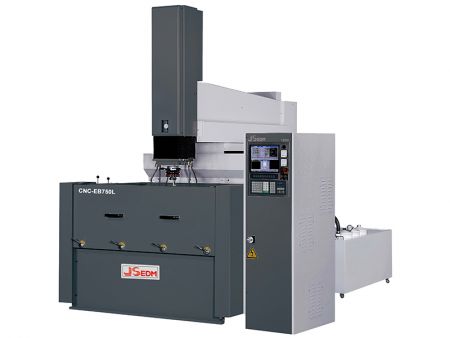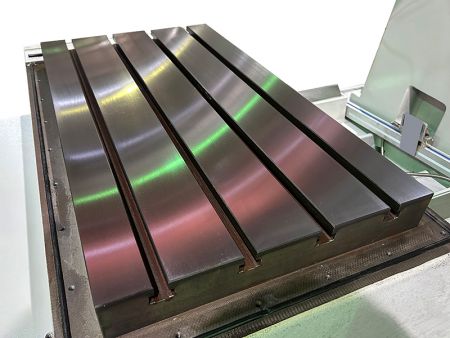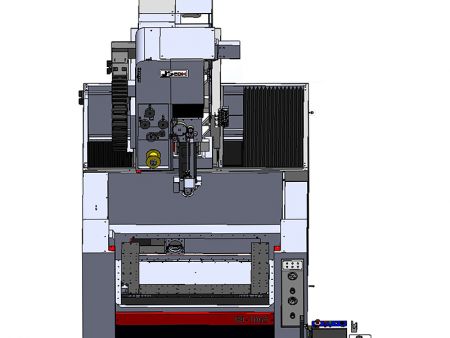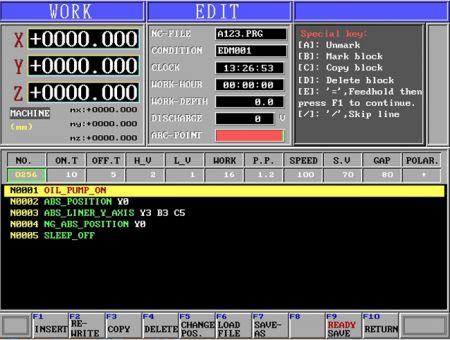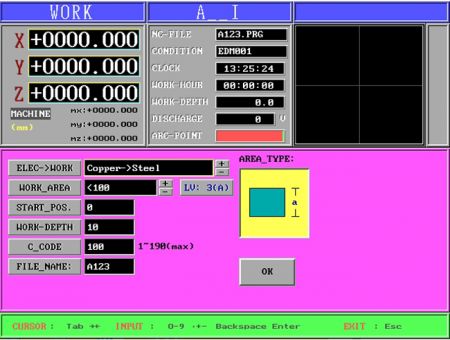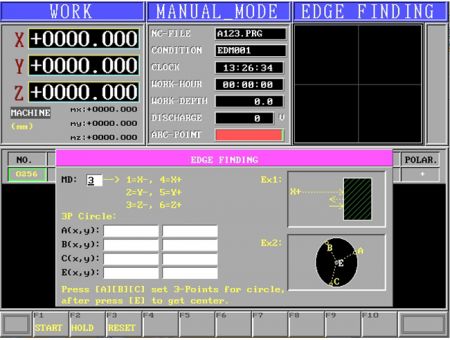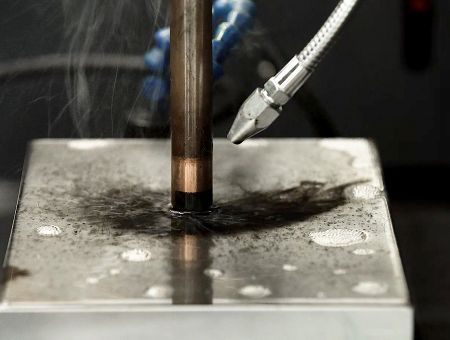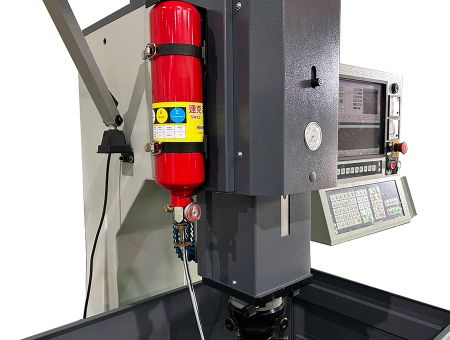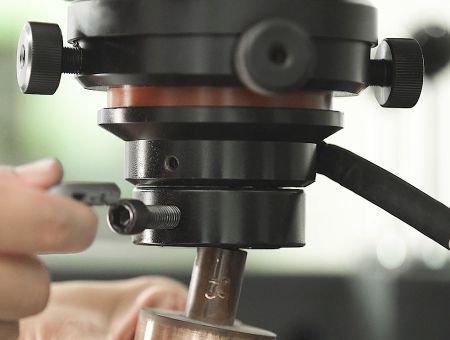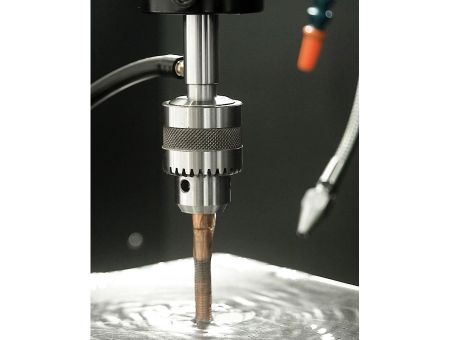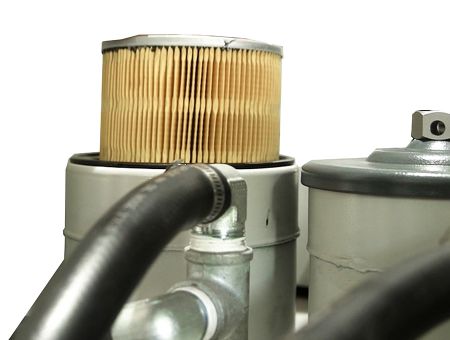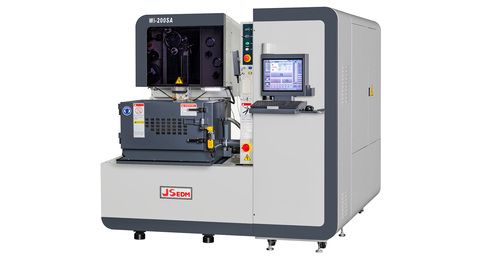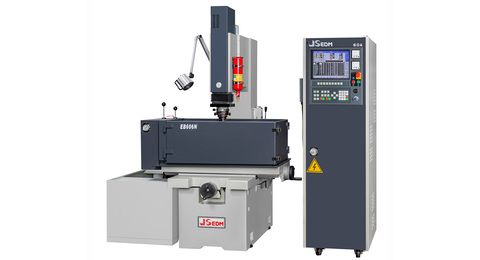JSEDM EB750L: Column Moving-Type CNC EDM Machine with 700/500/500mm Travel
JSEDM's EB750L Column Moving-Type CNC EDM delivers superior precision with 700/500/500mm XYZ travel and 3000kg workpiece capacity. Featuring high-rigidity structure, automatic tool changer, and advanced servo control system, this machine ensures exceptional stability and accuracy for industrial mold making and precision machining applications.
Column Moving-Type CNC EDM XYZ Travel 700 / 500 / 500
CNC-EB750L
Column Moving-Type CNC Electrical Discharge Machine
The EB750L is a moving column structure CNC EDM machine with an X-axis travel of 700mm, Y-axis travel of 500mm, Z-axis travel of 500mm, and a worktable size of 1000 x 600mm. It is equipped with a rear counterweight, ensuring the stability of the Z-axis regardless of the electrode weight. Customers can choose between oil flushing or oil immersion processing methods based on their needs. This machine features precision-grade screws, linear guides, and high-quality servo motors, complemented by a 1μm optical scale to ensure high precision and stability in machining. The EB750L can meet various machining requirements, making it an ideal choice in the manufacturing industry.
Machine Introduction
The EB750L have several features that make it stand out in the EDM machining. First, its moving column structure design provides greater travel space, allowing the EB750L to handle larger and heavier workpieces, meeting the demands for a broader machining range. Additionally, the rear counterweight system ensures the stability of Z-axis, maintaining machining accuracy even with heavy electrodes. Furthermore, customers can choose between oil flushing or oil immersion processing methods based on their needs, enhancing machining flexibility and adaptability.
The EB750L has a wide range of applications. Below are some examples:
- Industrial Storage Box Molds: The EB750L can precisely machine the structure of storage boxes, ensuring accurate dimensions, durability, and strength.
- Toolbox Molds: This mold contains numerous reinforcing ribs that require sheet machining through EDM.
- Printer Paper Feeder Clip Molds: The right angles of the paper adjustment tracks, markings, and the texture of the paper clip itself all need to be formed using EDM.
High-Rigidity Structure:
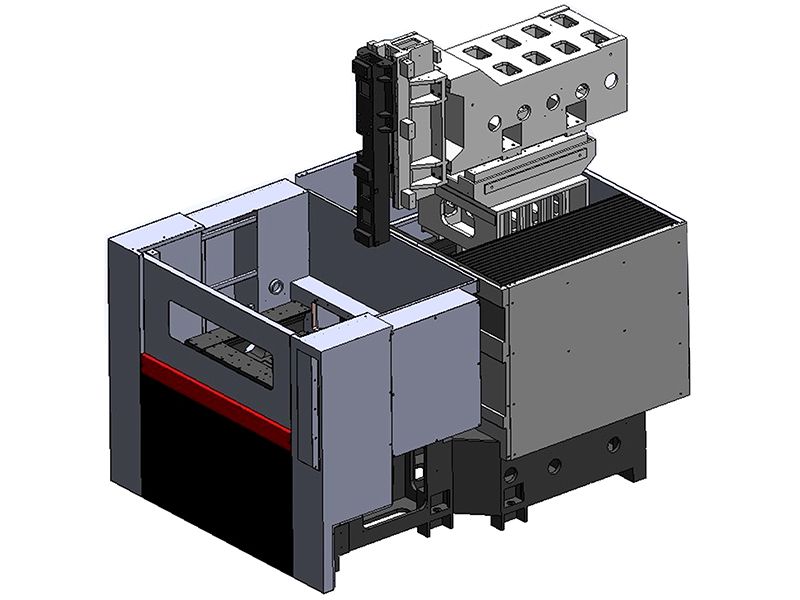
- The machine adopts a high-rigidity moving column structure capable of supporting workpieces up to 3000 kgs, reducing issues related to machine load and thermal deformation, thereby ensuring long-term precision.
- Made from Meehanite cast iron, the machine undergoes stress-relief heat treatment, providing a high-rigidity, symmetrically balanced base design. The worktable is heat-treated and precision-ground, making it wear-resistant and maintaining flatness even under heavy loads.
- The base design utilizes a moving column (bullhead type) structure, ensuring that the flatness of the workpiece on the table is not affected during movement, delivering optimal working precision. The robust base design prevents deformation even when subjected to long-term heavy loads.
Wide Linear Guide Span and Precision Ball Screw:
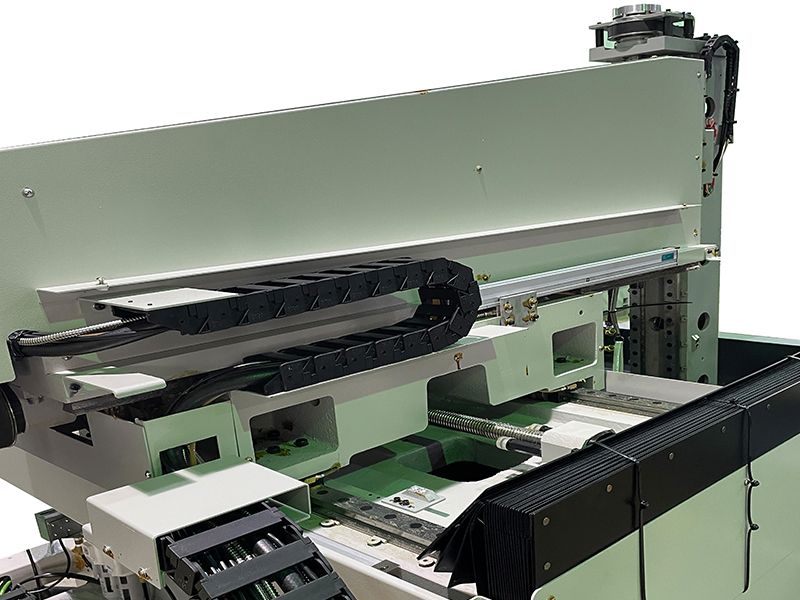
- The X and Y axes utilize low-friction linear guides, ensuring machine precision and smooth operation during its movement. The wide linear guide and span ensure accurate positioning and feed data during long-term back-and-forth and side-to-side movements, especially during reaming and vector machining, maintaining the machine's precision (backlash value) over time.
- The X-axis linear guide (Ψ 30mm) is mounted on the machine's middle base, ensuring flatness during installation and extending the lifespan of the guide, thereby maintaining machine accuracy.
- The Y-axis linear guide (Ψ 30mm) is installed on the machine's upper base, ensuring flatness during installation and lightness (without bearing weight) to reduce friction and extend the lifespan, thus permanently ensuring machine accuracy.
- The X-axis (Ψ 32mm) and Y-axis (Ψ 32mm) utilize precision-grade ball screws combined with low-friction linear guides to ensure machine accuracy.
Precision Spindle:
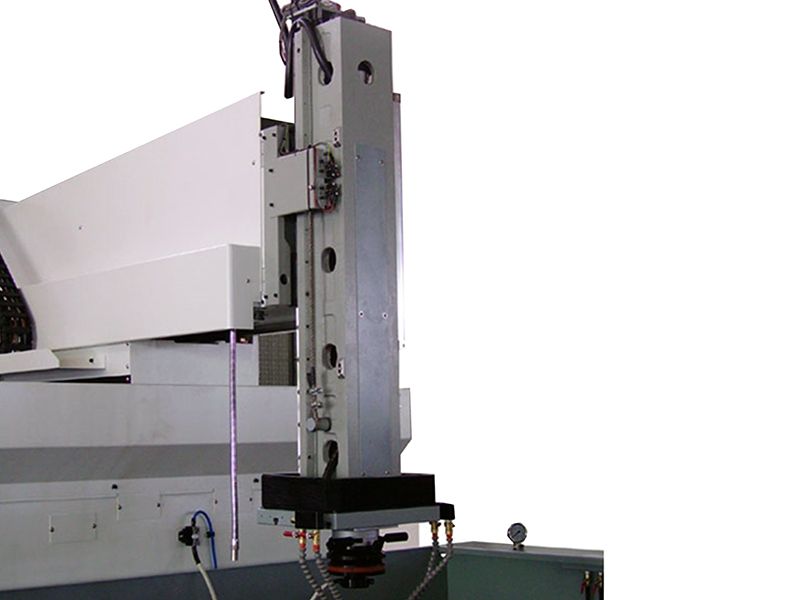
- The spindle section features an integrally cast design to ensure stability during large electrode machining. It also utilizes alloy steel guides (Ψ 30mm) combined with roller bearings, minimizing friction and ensuring spindle feed accuracy.
- The spindle tower is equipped with a 400W servo motor, making the spindle operation more lightweight (without counterweights) while ensuring precise displacement during operation and extending the lifespan of the ball screw (Ψ 25mm).
C-axis Features and Applications:
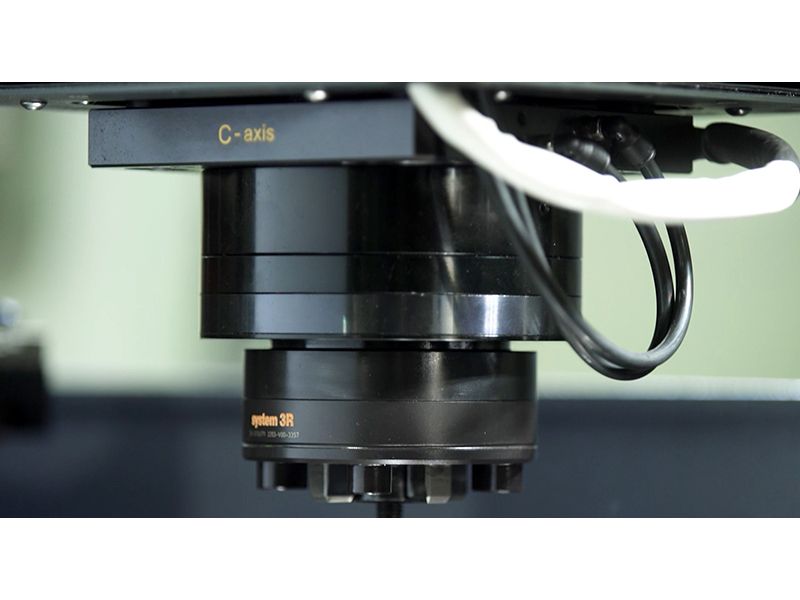
- The C-axis offers high-precision positioning capability, allowing for accurate positioning and rotation of parts during machining. This enables more precise machining and better results when working on parts that require rotational machining.
- The C-axis can perform indexing machining, which involves machining at fixed angles. This is particularly useful for parts requiring periodic or repetitive machining, improving consistency and efficiency.
- For parts with complex thread structures, the C-axis can facilitate thread machining. These thread structures may have unique shapes that require machining at various angles, and the rotational function of the C-axis allows for precise thread machining.
Automatic Tool Changer (ATC) and the Advantages of Automation:
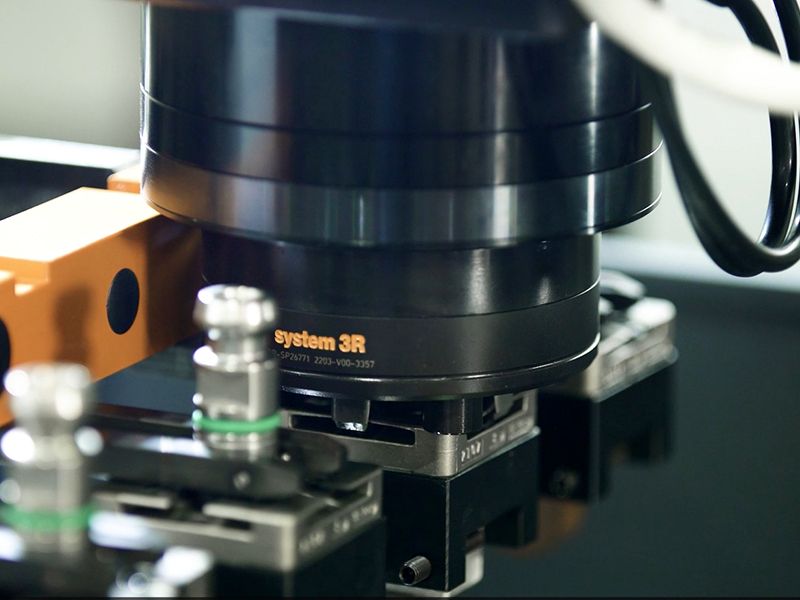
- Allows quick and precise tool changes, reduces tool change time and thereby increasing machining efficiency.
- Ensure that it is precise in every tool change, avoiding errors caused by human factors, which in turn improves machining accuracy.
- Can automatically complete tool changes during the machining process, reducing downtime and increasing machine uptime.
- Minimizes the need for manual intervention, reducing labor requirements while also lowering the risk of errors and accidents caused by human operation.
Controller Performance and Features
● Automatic Indexing: The system allows users to directly select material type and area, input machining depth and starting height, and then automatically search for the optimal conditions to generate the machining program. Users can also edit and save the generated program, which can be reloaded for future use without altering the original database content.
● High-Efficiency Discharge Module: The discharge circuit uses MOSFET transistors and a fast discharge device (POWER SINK) to enhance machining efficiency and reduce electrode wear. The machining circuit employs FPGA IC components for faster monitoring of discharge conditions (up to single discharge waveform monitoring), providing more effective prevention of carbon buildup (ARC). Users can set ARC voltage levels, ARC time, and ARC sensitivity to further improve machining efficiency. Additionally, it offers two-stage gap and two-stage off-time functions to assist users in automatically adjusting machining parameters when ARC occurs, leading to better machining efficiency. These features and designs aim to improve machining efficiency, reduce wear, and provide better operability and stability.
● Servo Control: The servo control system uses DSP digital processing, allowing for faster response times, with loop control occurring every 0.2ms, which is faster than the typical 1ms or more response time of PC-based controllers. This characteristic enhances spindle stability during machining, ensuring smoother machine operation.
Additionally, the CNC EDM machine offers a multi-stage debris removal mode, suitable for deep hole machining and thin sheet processing, providing more flexible machining options.
Moreover, the servo protection function is an important feature that prevents electrode damage caused by improper user operation, such as mold crushing. This protection function ensures the safety and longevity of the electrode during the machining process.
These combined features make the CNC EDM machine's servo control more flexible, stable, and safe, capable of meeting various machining demands while ensuring high-quality machining results.
Product Specification
| Technical Spec. | |||
|---|---|---|---|
| Mechanical Structure | Column Moving-Type | Distance Between Platen to Table | 730mm |
| Work Tank Capacity L x W x H (mm) | 1500 x 940 x 520mm | Optical Scale Display | 1um |
| Work Table Size | 1000 x 600mm | Max. Machining Current | 60A 90A (Optional) |
| X Axis Travel (Right-Left) | 700mm | ||
| Y Axis Travel (Front-Back) | 500mm | Min. Electrode Wear Ratio | 0.12% |
| Z Axis Travel | 500mm | Machine Weight | 4500kgs |
| Max. Workpiece Weight | 3000kgs | Fluid Tank Capacity | 964L |
| Max. Electrode Weight | 250kgs | Machine Outside Dimensions (W x D x H) | 2840 x 2700 x 2700mm |
- Gallery
- In this interface, you can input various machining programs such as vector machining, orbiting, side placement, and rectangular processing.
- The AI automatic indexing function allows users to directly select the material and area to be machined. After inputting the machining depth and starting height, the system automatically searches for the optimal conditions.
- The one-page multifunctional calibration includes edge finding, inner hole finding, outer circle finding, vertex finding, and circle center finding.
- When the fire sensor detects flames, it sends an alarm signal and pauses the machine to prevent a fire from occurring.
- When the worktable catches fire due to excessive oil temperature, the fire extinguisher is activated to extinguish the fire, providing a second layer of protection beyond the fire sensor.
- The adjustable electrode head allows for quick electrode replacement and adjustments for parallelism and verticality.
- The three-jaw chuck allows dielectric fluid to pass directly through the jaws and flow along the electrode into the mold, enhancing debris removal efficiency.
- The vertical filter cartridge design makes it easy to replace the filter and prevents the filter from breaking during replacement, avoiding spills of oil and metal debris.
Why Is the EB750L's Controller the Game-Changer for Automotive Component Production?
The EB750L's advanced controller with DSP digital processing delivers 0.2ms response time—5x faster than typical PC-based systems—ensuring exceptional stability during critical automotive component machining. Its FPGA IC components provide single discharge waveform monitoring that prevents carbon buildup while reducing electrode wear to just 0.12%, extending tool life and maintaining dimensional accuracy. The multi-stage debris removal mode is particularly valuable for the deep cavities and thin-wall features common in automotive molds, delivering superior surface finish while preventing workpiece damage.
Equipped with precision-grade ball screws, low-friction linear guides, and high-quality servo motors complemented by a 1μm optical scale, the EB750L delivers superior machining accuracy and stability. The advanced controller offers AI automatic indexing, high-efficiency discharge modules with MOSFET transistors, and DSP digital processing for responsive servo control. Additional features include flexible machining options with oil flushing or oil immersion processing methods, comprehensive safety systems including fire sensors and extinguishers, and vertical filter cartridge design for easy maintenance, making the EB750L the perfect solution for demanding manufacturing applications.

